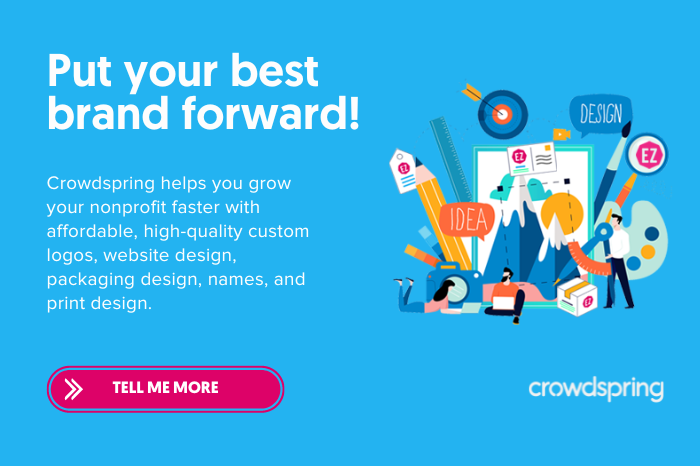The Ultimate Nonprofit Social Media Playbook: Strategies to Maximize Impact

Giving Tuesday is the most important day of the year for most nonprofits. As you prepare your Giving Tuesday campaign, remember that fundraising success for this day largely depends on social media.
How’s your social media content performing? Does your organization intentionally make social media a part of your broader digital marketing strategy? Or are you unsure how best to integrate it into your donor outreach?
Developing a social media strategy for nonprofits can be both exciting and challenging.
Whether you’re just beginning to create a strategy or you’re looking for ways to boost engagement with your existing content, these best practices will help your nonprofit make a difference:
Establish clear goals
Begin by setting SMART (Specific, Measurable, Achievable, Relevant, and Time-bound) goals for your nonprofit’s social media campaigns.
These goals should align with your organization’s mission and overall objectives.
For example, if your nonprofit focuses on education, your social media goals might be to raise awareness about the importance of education and increase engagement with your online community.
A nonprofit focusing on environmental conservation can set a goal to increase its social media following by 20% in six months to spread awareness and attract more volunteers.
Choose the right platforms and tools
Select the most suitable platforms for your nonprofit’s target audience and objectives.
Facebook, Twitter, Instagram, LinkedIn, and YouTube are popular for nonprofits, but consider other platforms like Pinterest and TikTok if they align with your audience and goals.
An animal rescue nonprofit might use Instagram and Facebook to share heartwarming stories of rescued animals while using LinkedIn for professional networking and recruiting volunteers.
Use tools like Hootsuite, Buffer, or Sprout Social for managing and scheduling your social media content. These tools can help you create a social media calendar, track analytics, and monitor engagement.
Create a social media calendar
Develop a social media calendar to plan, organize, and schedule your content in advance.
This ensures consistent posting and helps you maintain a cohesive brand presence across platforms. Include important dates, holidays, or events relevant to your nonprofit in the calendar.
For example, as you prepare for your Giving Tuesday campaign, ensure that you leave yourself enough time and align your goals with the broader mission and objectives of your organization.
A nonprofit focusing on mental health awareness can create a social media calendar that includes World Mental Health Day posts and weekly self-care tips.

We just emailed you info about the Give Back program.
Engage with authentic storytelling and visuals
The first step to improving your social media strategy is to focus on what social media is designed for—engagement.
Encouraging your supporters to get involved by following you and consistently interacting with your posts is important.
Use authentic storytelling to share the impact of your nonprofit’s work, featuring real people, communities, and success stories.
This approach fosters emotional connections and encourages engagement. Incorporate visuals, such as images and videos, to make your content more compelling and shareable.
A nonprofit providing clean water solutions can share a video of a community celebrating access to clean water for the first time, along with personal stories from community members.
Don’t make your supporters do all the work, though. You can make it easy for them to interact with you by strategically building invitations for engagement into all of your content.
Tell stories. Share short, engaging content through Instagram, Facebook, or TikTok stories, such as volunteer experiences or blog post highlights, to capture user attention. In each story, include a swipe-up link to a blog post or a relevant campaign, encouraging followers to take further action.
Incorporate interactive stickers. Add stickers to your stories, such as Q&A, polls, or quizzes, to encourage users to participate and engage with your content.
Ask questions. Start conversations by including questions in captions or graphics, fostering user curiosity, and encouraging them to learn more about your organization.
Collaborate with nonprofit influencers. Connect with nonprofit influencers to attract more users to your organization’s page, expanding your reach and potential supporters.
Ensure ongoing interaction with your supporters by responding to comments, answering questions, and acknowledging user contributions like donations or volunteering.
Promote user-generated content to showcase your nonprofit’s community and encourage further engagement.
Give followers somewhere to go
Encourage followers to visit your nonprofit’s website through well-designed landing pages.
To retain users on landing pages and prompt action, ensure your pages are accessible, targeted, and optimized for mobile devices, as many users access links via mobile. Consider Snowball Fundraising’s nonprofit website tips for guidance.
Evaluate your nonprofit’s CMS to improve functionality and accessibility. Create focused landing pages for specific campaigns with clear calls to action. Consider the most relevant pages for users to land on for general posts.
Foster a sense of community
Build a community around your cause by encouraging followers to engage with your content and each other. Respond to comments and messages, and consider hosting Q&A sessions or live events to facilitate discussions.
A nonprofit dedicated to fighting homelessness can host a live Q&A session with a formerly homeless person, allowing followers to ask questions and learn about the individual’s experience.
Emphasize transparency and authenticity
Be transparent and authentic in your communications, showcasing your nonprofit’s impact, successes, and challenges. This helps build trust with your audience and encourages them to support your cause.
A nonprofit focusing on disaster relief can share updates on their relief efforts, including their successes and ongoing challenges, giving supporters a realistic view of the work.
Address common pain points
Identify common pain points or challenges nonprofit founders face regarding social media and provide actionable solutions. Address these pain points in your content to demonstrate your understanding of your audience’s needs and expertise in the field.
A nonprofit offering support to other nonprofits can create a blog post series addressing challenges like limited resources, volunteer management, and donor retention, offering practical advice and solutions.
Keep your strategy simple and focused
Maintain simplicity and focus in your social media strategy by concentrating on critical objectives and platforms. This allows you to invest your resources effectively and stay consistent in your messaging and branding.
A small nonprofit can focus on Facebook and Instagram as their primary platforms, developing a content strategy around raising awareness, sharing success stories, and connecting with their community.
Drive intentional conversions
While increasing engagement and followers is essential, driving tangible results requires intentional efforts for conversions. Conversions include donations, newsletter sign-ups or registrations, and event payment.
Create campaign-specific posts directing users to robust landing pages for taking action. Here are some examples of directing followers to an off-app action for conversions:
- Link directly to donation pages. Post a heartwarming photo of a beneficiary your nonprofit helped and include a brief caption explaining how donations made a difference in their lives. Add a direct link to your donation page in the caption or your bio, urging followers to contribute and create more positive change.
- Share infographics explaining how to text a donation. Create an infographic detailing the steps to donate via text message during a disaster relief campaign. Share this on social media, emphasizing the urgency and ease of contributing to the cause through texting.
- Craft videos that tell your nonprofit’s story and include a call to action. Create a video highlighting your nonprofit’s journey, including the founders’ story, milestones, and impact on the community. Conclude with a call to action inviting viewers to join your email newsletter or attend an upcoming fundraising event.
Paint a cohesive picture of your brand
Your social media presence is a crucial extension of your nonprofit’s brand, and it’s essential to present a cohesive image that aligns with your other marketing channels. Consistent nonprofit branding helps convey your organization’s identity, purpose, and values.
To maintain consistency across platforms, consider these nonprofit branding tips:
1. Research how your audience perceives your brand and ensure it aligns with your intended image.
2. Harmonize graphic design elements like colors, fonts, and icons across your website and social media accounts.
3. Develop a style guide to establish a consistent voice on all platforms.
4. Create a library of branded templates for easy and cohesive posting.
5. For nonprofit logos, draw inspiration from successful brands’ logos and analyze their effectiveness.
Consistent branding increases the impact of your social media content when shared by supporters, enhancing your organization’s recognition and reputation.
Measure and optimize your strategy
Track the performance of your social media campaigns using platform-specific analytics and third-party tools. Measure the effectiveness of your efforts based on your SMART goals, and adjust your strategy accordingly.
A nonprofit promoting sustainable living can track the engagement and reach of its social media posts, analyzing which content resonates most with its audience. Based on the findings, they can refine their content strategy to focus on high-performing topics.
While crafting an effective social media strategy requires time, the increased awareness and donor engagement make it a worthwhile investment.
Remember, social media doesn’t operate in isolation. Seamlessly integrate it with other marketing channels for a well-rounded strategy supporting your nonprofit’s mission.
Design Done Better
The easiest way to get affordable, high-quality custom logos, print design, web design and naming for your business.
Learn How to Grow Your Business With Beautiful Design
